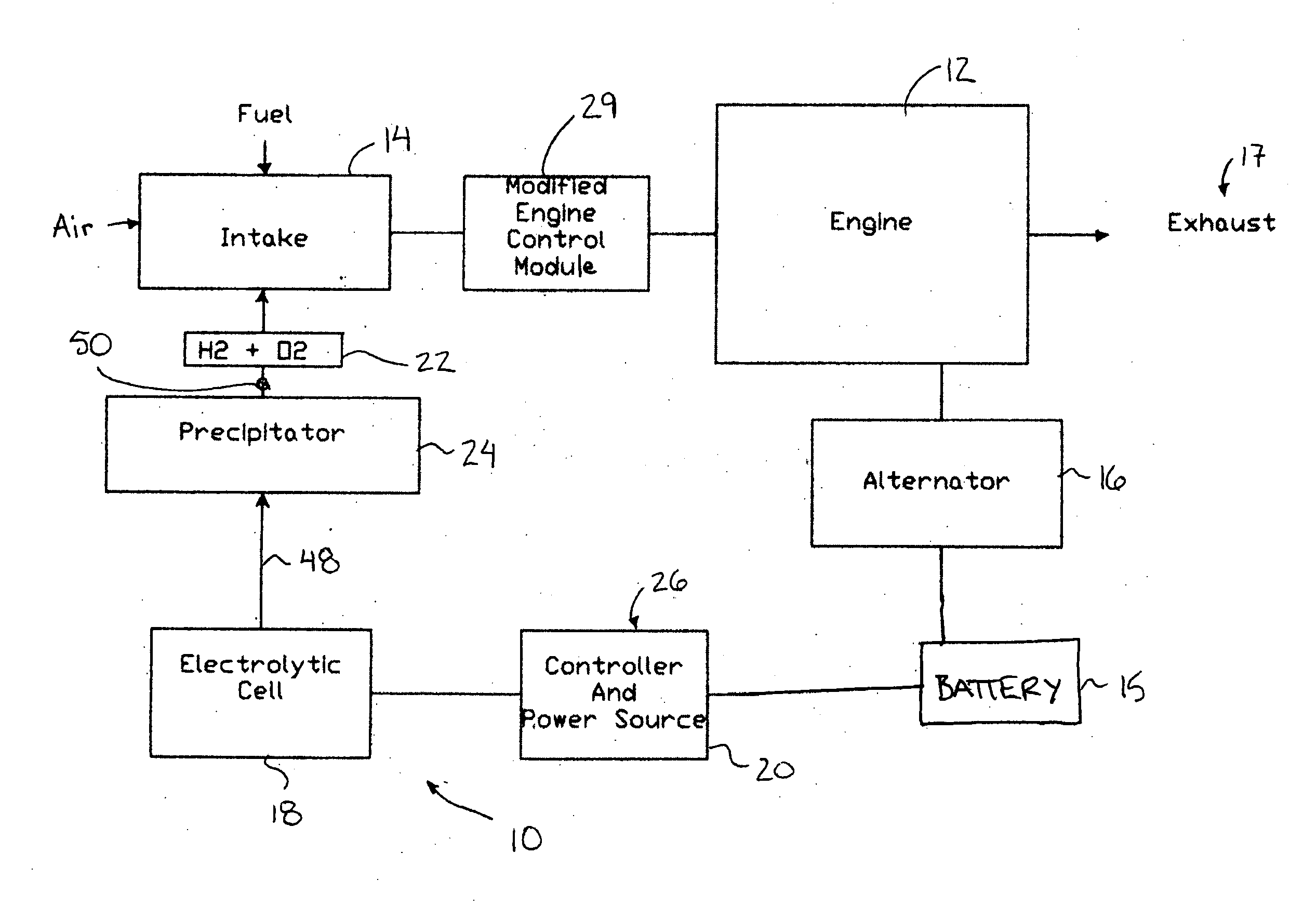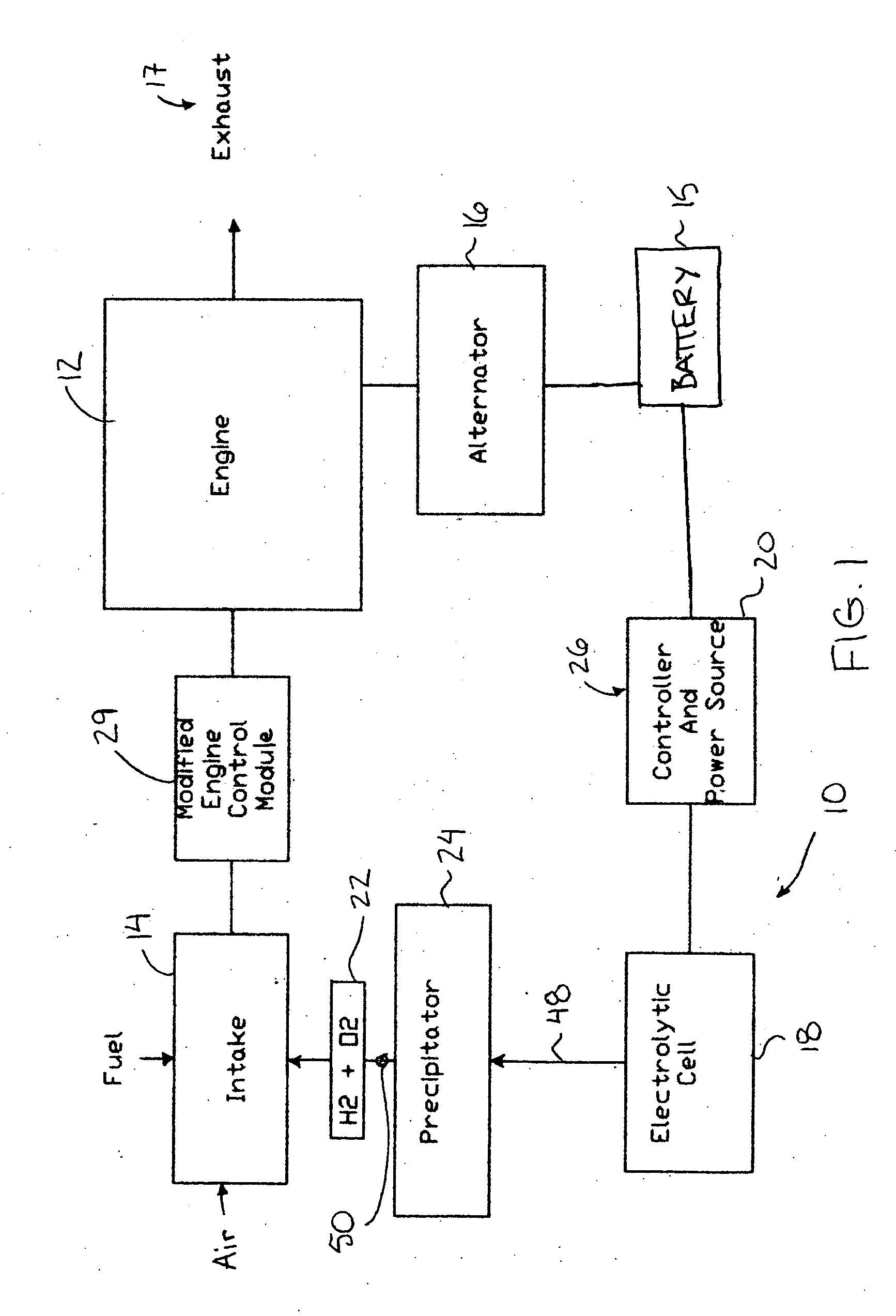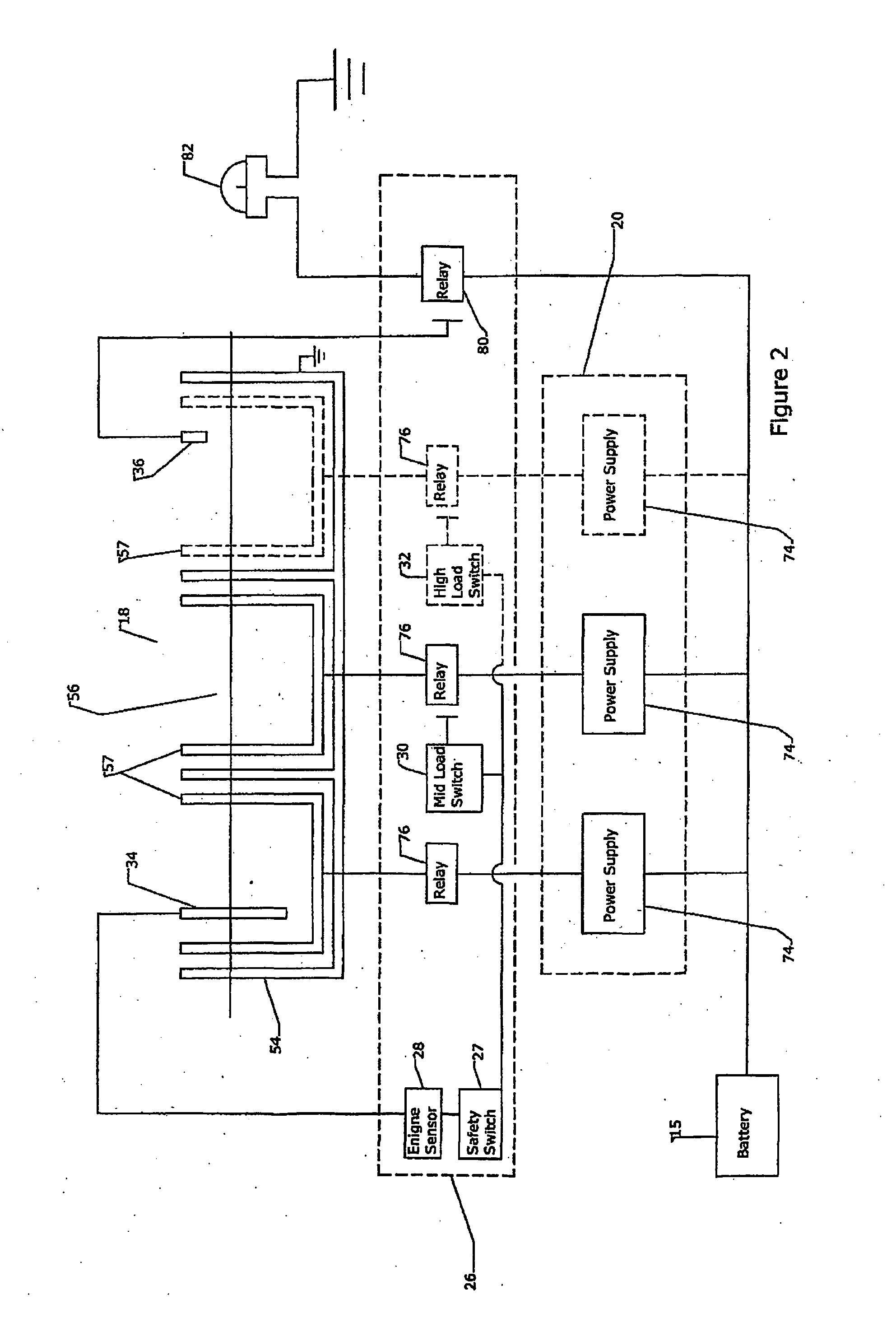Electrolytic Cell for an Internal Combustion Engine
- Summary
- Abstract
- Description
- Claims
- Application Information
AI Technical Summary
Benefits of technology
Problems solved by technology
Method used
Image
Examples
Embodiment Construction
[0056]Referring to the accompanying figures there is illustrated an electrolyser system generally indicated by reference numeral 10. The system 10 is particularly suited for producing combustion enhancing gases for an internal combustion engine 12. Although various embodiments are shown in the accompanying Figures, the common features will first be described herein.
[0057]The engine 12 typically receives fuel from an onboard supply which is received through the intake 14 of the engine. Electrical power is generated by an onboard alternator 16 which is coupled to the engine. Generated electrical power or energy is stored in a battery 15. Combustion of the fuel within the engine produces exhaust 17.
[0058]The electrolyser system 10 comprises an electrolytic cell 18 which receives power from a power source 20 which will be described in further detail below. The power source 20 receives power from the battery 15 and converts the power to a DC current which has been transformed to a range ...
PUM
 Login to View More
Login to View More Abstract
Description
Claims
Application Information
 Login to View More
Login to View More - R&D
- Intellectual Property
- Life Sciences
- Materials
- Tech Scout
- Unparalleled Data Quality
- Higher Quality Content
- 60% Fewer Hallucinations
Browse by: Latest US Patents, China's latest patents, Technical Efficacy Thesaurus, Application Domain, Technology Topic, Popular Technical Reports.
© 2025 PatSnap. All rights reserved.Legal|Privacy policy|Modern Slavery Act Transparency Statement|Sitemap|About US| Contact US: help@patsnap.com



